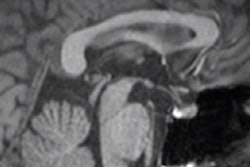Determining symptom onset time for acute ischemic stroke is crucial because reperfusion treatment options depend highly on the time window. However, it's often impossible to pinpoint the onset time in patients awakening with neurologic deficits, said senior study author Namkug Kim, PhD, from the University of Ulsan and Asan Medical Center in Seoul.
"Although diffusion-weighted imaging (DWI)-fluid-attenuated inversion recovery (FLAIR) mismatch has been suggested as a biomarker to estimate onset time in unknown-onset stroke patients, it is limited by low to moderate inter- and intraobserver reliability," Kim said.
The researchers investigated the use of automatic methods based on deep learning, as well as a machine-learning method called a support vector machine (SVM). They believe these systems could be useful in selecting unknown-onset stroke patients who would be candidates for reperfusion therapy.
"When the [deep learning] or [support vector machine] systems, using data of clear-onset stroke patients, are applied to a new patient with unclear onset time, it takes less than a minute to determine whether the symptom onset is within 4.5 hours or six hours," he told AuntMinnie.com. "This characteristic would help clinicians in an emergency department to decide whether patients with an unclear onset time should undergo further thrombolysis or intervention. Taken together, the machine-learning systems may be useful to further broaden the use of the DWI-FLAIR mismatch tissue clock in clinical practice."
Get more details by attending this talk on Wednesday afternoon.



















